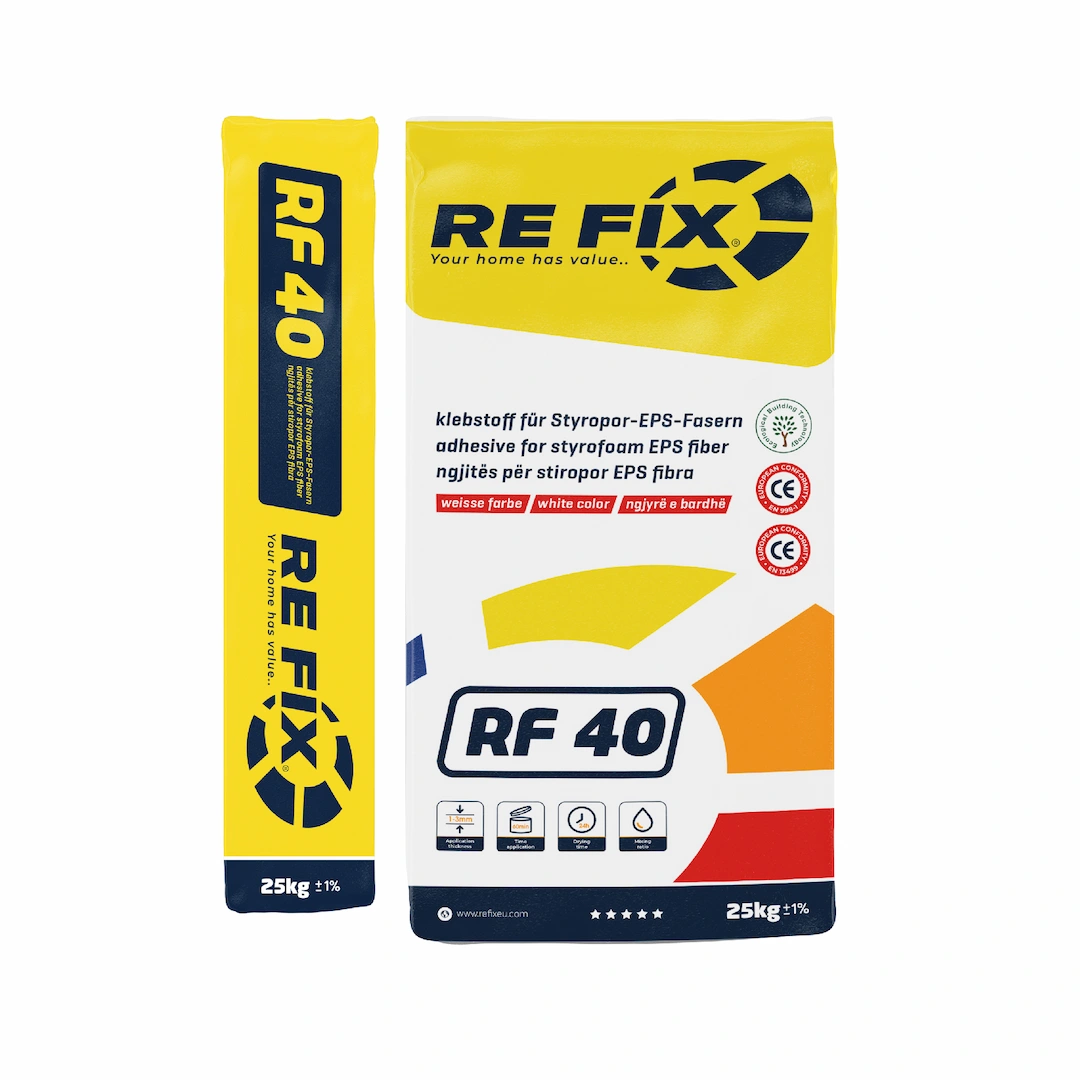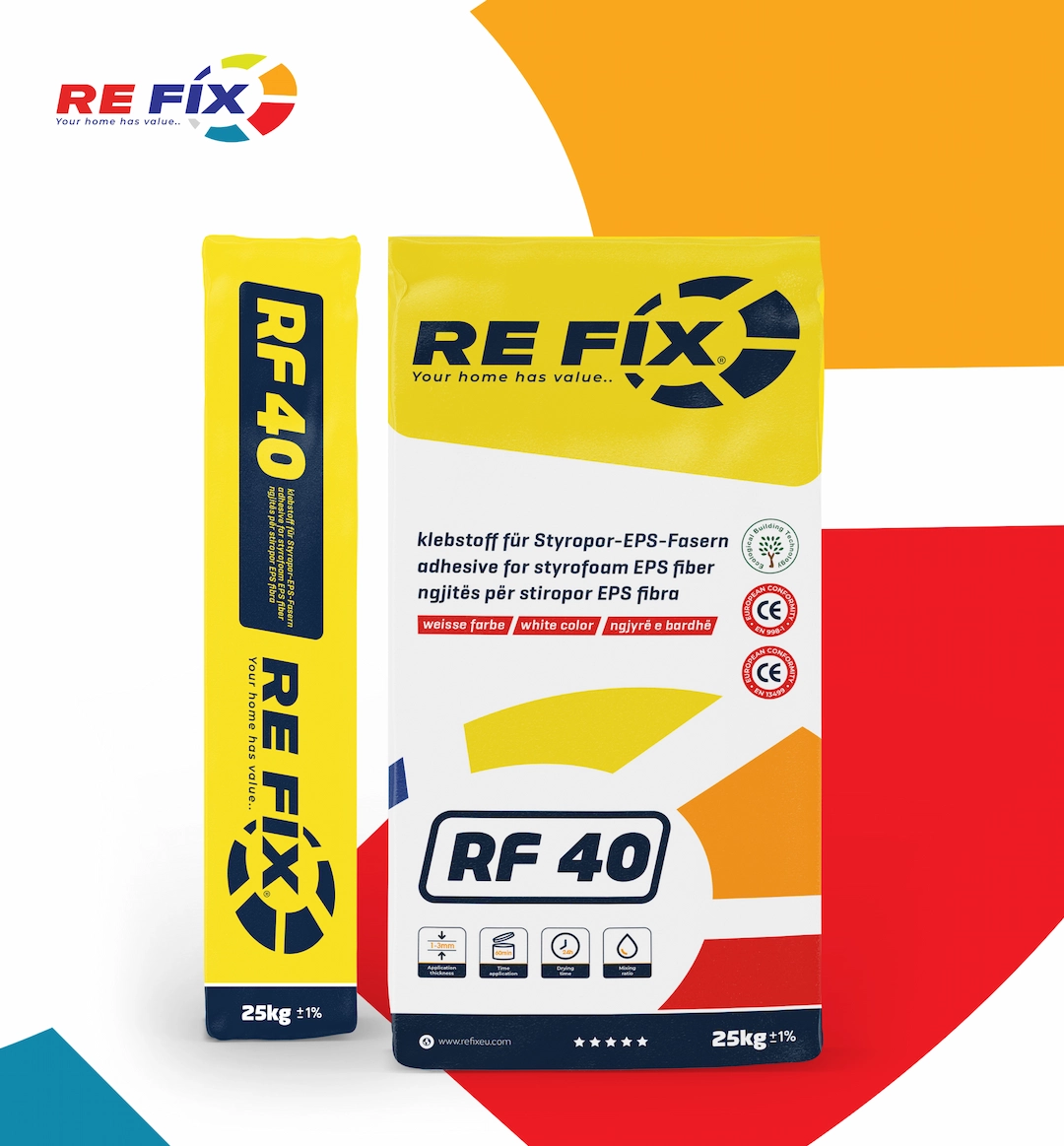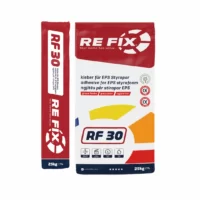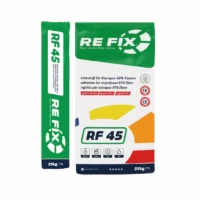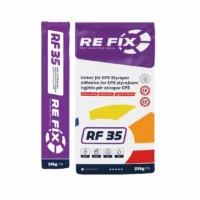Adhesive for EPS foam fibers RF 40
RF 40 Prepared mortar based on gray and white cement, consisting of Protland Cement of excellent quality, carbonate stone filler with selected granulometry, synthetic resins and special additives, which improve the workability, adhesion and increase the hydrophobicity of the mortar dry. FIELD OF USE RF 40 serves for gluing all types of panels that are generally used for the realization of thermal insulation systems, such as: styrofoam, graphite, panels with mineral fibers on brick walls, concrete or cement-based mortar. APPLICATION PROCEDURE Surface preparation The supports must be compact, weathered and durable, without cracks, oils, paints or loose parts. Check to see if the bricks are well attached and have no parts that can come off. If there are such parts, remove the repair surface with mortar. Walls that are plastered should be scraped to check if the surface underneath is covered with old, poorly adhered paint, or if there are loose parts. Dusty surfaces must be treated with Tecnofix Liquid primer. Superficial cracks can be closed with RF 40, while deep structural cracks must be treated in order to eliminate the causes and prevent them from recurring. If the surface is not flat or straight, it must be leveled or made straight using Tecnofix. APPLICATION RF 40 To achieve a stable installation, before starting to glue the panels, it is necessary to fix the metal profiles as leveling connectors. For installations on irregular surfaces, such as unplastered brick walls, the adhesive is applied with a trowel, placing it as a strip at the edges of the side contours of the panels and a few dots in its center (or forming an X in the center of the panel) to a certain thickness in order to compensate for the unevenness. For applications on flat surfaces, it is recommended to spread the adhesive over the entire surface of the panel using a notched trowel (from 8 to 10 mm). Attention should be paid to the surface covered with glue, which should be at least 40% of the total surface of the panel. Panels must be installed horizontally, starting from the bottom and continuing upwards. Watch out for panel joints; do not leave empty spaces or gaps. Next, proceed with the mechanical fixing of the wall anchors (for the usual 50 x 100 cm panels, it is recommended to use 8 adhesive points per square meter).


